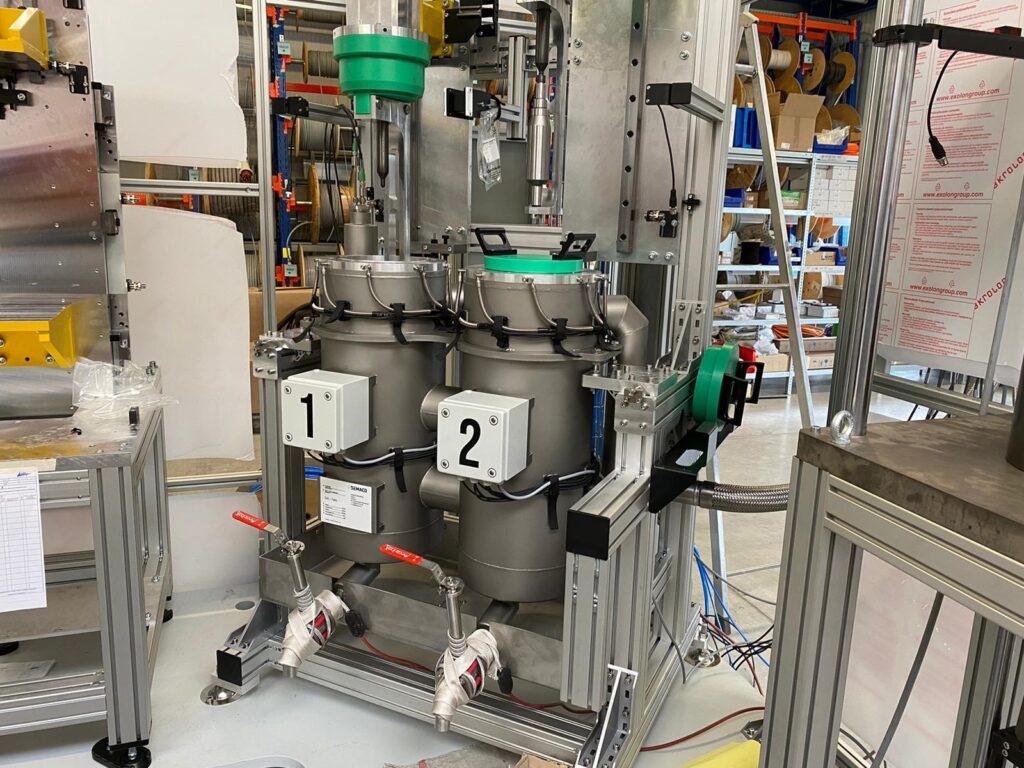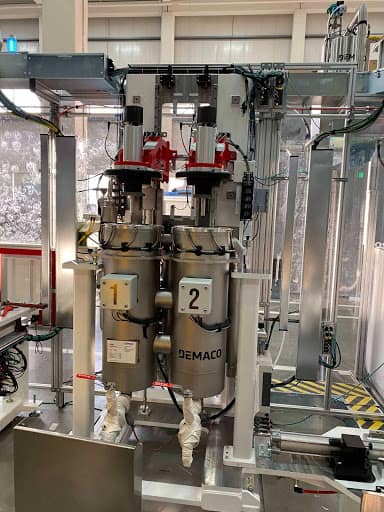The automotive industry is constantly evolving. New trends and car models require new production methods; simultaneously, sustainability is becoming increasingly important. As a consequence, there is a growing demand for electric cars. China and Europe sold some 1.3 million electric cars in 2020, a whopping 43% more than in 2019.
What does this mean in terms of the use of cryogenic equipment in the automotive industry? In this blog, we focus on the application of cooling trays during the production process of automobiles. We explain how this popular cryogenic application is used and why Demaco has been working hard to develop a cooling tray with a new design for electric cars over the past few years.
What is a cooling tray in the automotive industry?
A cooling tray in the automotive industry is a vacuum insulated dewar filled with a cryogenic liquid (almost always liquid nitrogen), into which automotive parts are immersed during the production process. The cooling trays are built into a robotic production line; hence, the immersion process is fully automated.
Cooling trays in the automotive industry are used to perform cold shrink technology, also called shrink fits.
Shrink fit
A shrink fit is a commonly used method in the assembly of automotive engines. During a shrink fit, extremely cold and hot temperatures are used to slide and anchor two parts firmly together.
The outer part is heated, causing it to expand slightly. The part to be placed inside (a ring or shaft) is cooled to the extreme, shrinking the part a few millimeters as a result. This cooling can be done by temporarily submerging the ring or axle in a cooling tray containing liquid nitrogen. Liquid nitrogen has a boiling point of about -196 °C and is a very efficient cooling agent.
When all the parts return to room temperature after being interleaved, the previously cooled parts expand again while the heated parts around them shrink again. By using this clever method, it is possible to slide parts into each other with slight pressure and make them fit together rigidly. This considerably reinforces the construction thus preventing damage.

A shrink fit requires exact control of machining tolerances on the parts and absolutely accurate cooling and heating. Heating is typically done using an induction heater; Demaco’s cooling tray provides the ideal solution for cooling the inner parts.
Innovation in cryogenic equipment
Not only the automobile itself but also the cryogenic equipment used in manufacturing automobiles is developing.
About a decade ago, gasoline or diesel internal combustion engines were mainstream. Most automakers used these engines, and almost all these engines were produced using shrink fits performed in a cooling tray. The standard cooling tray was filled with liquid nitrogen, which ensured that rings and shafts of combustion engines were efficiently cooled for a successful fit.
While the traditional cooling tray is still used, the design of shrink fits has undergone some changes. Except for a few major automakers, internal combustion engine manufacturers today no longer use liquid nitrogen cooling trays. Other methods, such as electric cooling, took over from cryogenic equipment.
However, this did not lead to the end of the Demaco cooling tray. Partly due to the ever-decreasing prices, tax advantages, and environmental benefits, the sales and production of electric cars are enormously increasing worldwide. And with this growth and development comes the demand for new cryogenic equipment, such as a cooling tray, especially for electric motors.
With some design modifications to perfectly suit this “new” type of motor, traditional liquid nitrogen cooling trays offer the durability, affordability, and precision that is required for a successful shrink contraction for an electric motor.

Demaco’s cooling trays for electric cars
Our team of cryogenic engineers has been working hard on a cooling tray with a new design to respond to the above developments. A new cooling tray within the cryogenic technique that perfectly meets the requirements of an electric motor. The elements that need to be cooled in an electric motor are slightly different from those in an internal combustion engine, so some modifications were necessary.
Currently, Demaco offers both cooling trays for internal combustion engines and electric motors. In cooperation with machinery suppliers in the automotive industry, we provide a complete cryogenic system consisting of a cooling tray, vacuum insulated transfer lines, and quality enhancing products, such as a phase separator. We also place a thermal heater around the edge of our cooling trays to prevent the extreme cold from escaping the tray.
Our cooling tray projects consist of cryogenic engineering, manufacturing, and testing; the unit is incorporated in our Systems business unit. Our Systems team is immensely proud of the cooling trays we have built so far, and we expect the demand for our new design to grow hand in hand with the sustainability of the automotive industry.

Do you want to know more?
Demaco has some 25 years of experience in the design and production of cooling trays. Do you have any questions about our cryogenic equipment or other cryogenic applications and systems? Feel free to contact us or take a look at our products and projects for more information.




